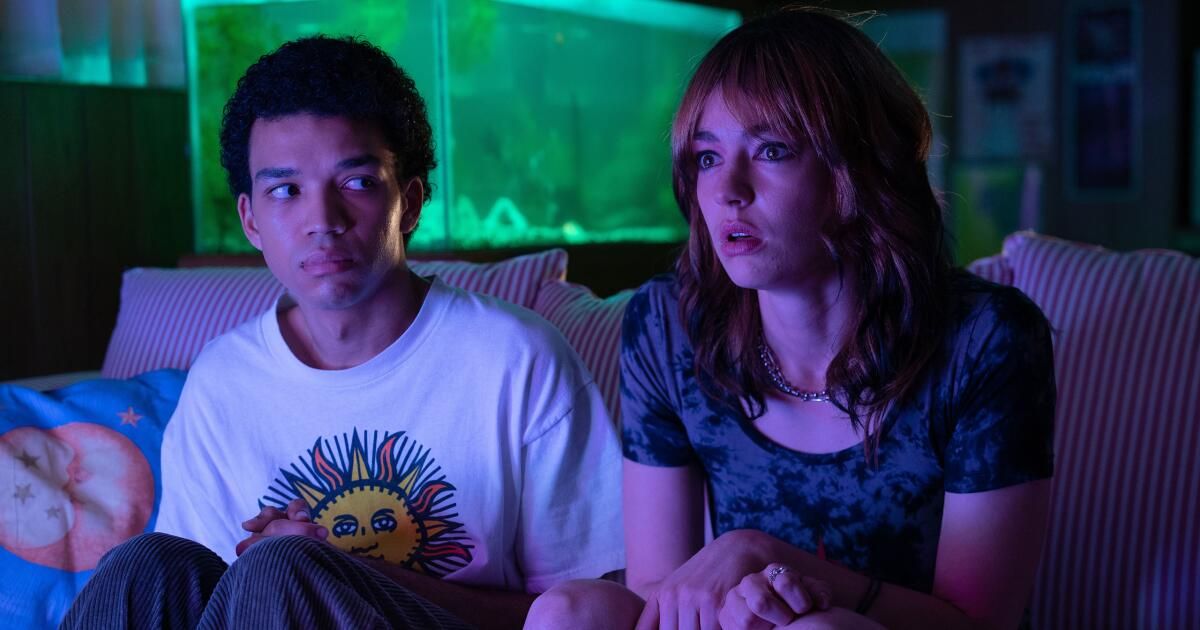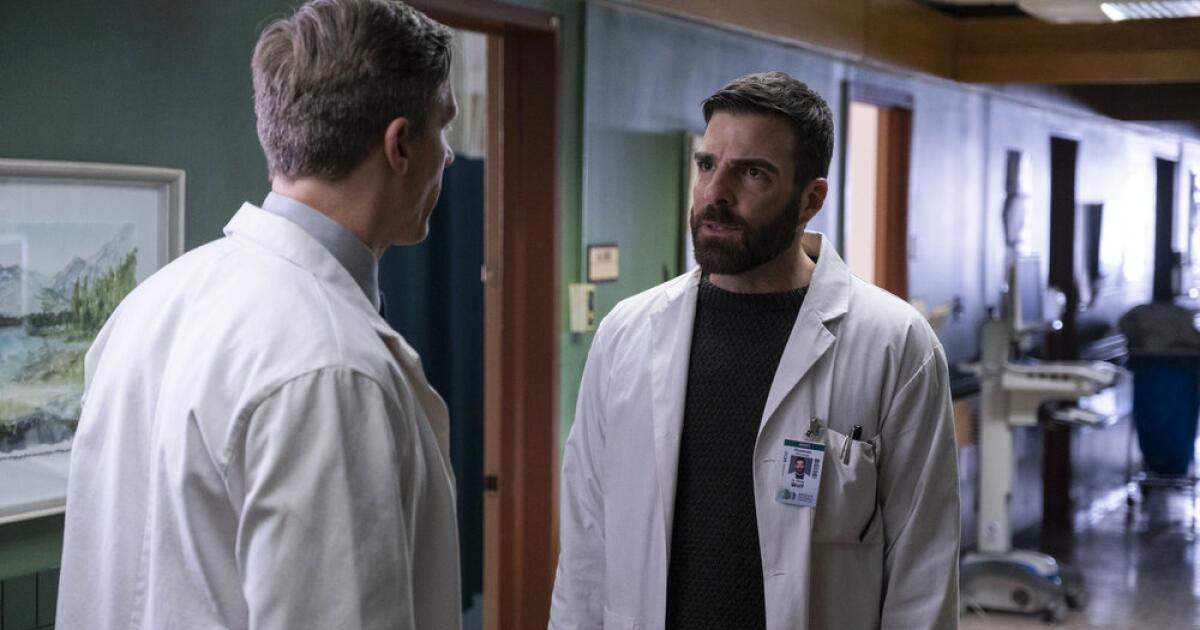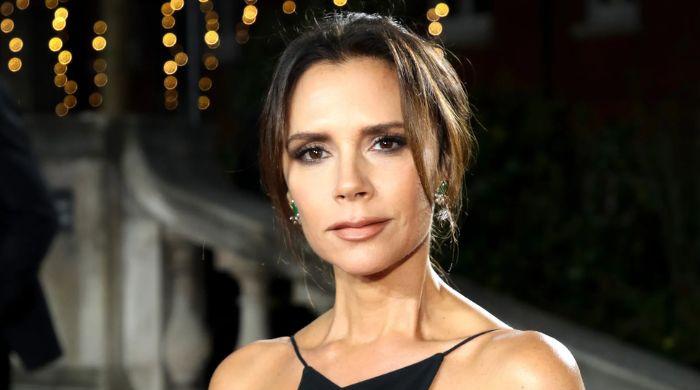“I Saw the TV Glow” is a claustrophobic atmosphere piece that takes advantage of the emptiness of growing up hypnotized by the screen. In 1996, a withdrawn boy named Owen (played as a seventh grader by Ian Foreman and by Justice Smith in his barely mature adolescence and adulthood) becomes obsessed with a late-night teen thriller called “The Pink Opaque” and, when the show is cancelled, he fills his soul by watching reruns with the fear that if he did anything else, he would be forced to admit that his existential choices are simply static.
Owen is a helpless, desperate, inarticulate avatar for anyone who has ever wondered whether it would be healthier to look less and live more. (Film critics, for example.) While the film's horror elements left me unsettled, having spent part of my life watching Owen's film, I was haunted by its residue: the feeling of being one cow watching another. cow being sucked into a UFO. tractor beam, bellowing in vain at the fact that we are all just a hamburger.
Writer-director Jane Schoenbrun is one of a burgeoning group of young filmmakers, like Kyle Edward Ball (“Skinamarink”) and Vera Drew (“The People's Joker”), whom I'll call Indoor Kids, as they tap into their formative pop. -culture totems like a terrarium. Their intimate stories unfold in someone else's habitat. Schoenbrun, who debuted in 2021 with the equally airtight internet cooler “We’re All Going to the World’s Fair,” has a knack for images that trigger a Pavlovian response: DARE posters, Fruitopia vending machines, voting booths offering Ross Perot or Ralph Nader, and inserted scenes from “The Pink Opaque” that capture the flat, glossy blur of '90s episodic television. Sensory memories of childhood isolation wash over me like a lucid dream. (The only mistake is Alex G's overly modern and cheesy folk soundtrack.)
“The Pink Opaque” stars summer camp friends Isabel and Tara (Helena Howard and Lindsey Jordan) who discover they are psychic soulmates. Think “Buffy the Vampire Slayer” with a dash of Georges Méliès. Each week, Isabel and Tara fend off a silly minor villain (clowns, moon-faced thugs, something called Drainlord) as they prepare to defeat the big bad, the resonantly named Mr. Melancholy (Emma Portner).
When Owen watches the show with fellow obsessive Maddy (Brigette Lundy-Paine), an older classmate who guards the walls around her fandom with quick, impatient ferocity, both teens' faces are awash in warm pink light. They gape at an ice cream monster drooling soft serve ice cream with its sticky fangs. That almost mythical melting atrocity might not be what everyone else sees.
But all us seeing is calculated to tickle the corners of our brainstem. The nostalgic tingle that Schönbrun achieves is the feeling of being shrouded in mysteries. Some puzzles fade with age (What do others do after my 10 pm bedtime?), while others persist (Why did my gym class make us play with parachutes?).
The most important question here is: What makes someone surrender to the spell of a spectacle? What lies beneath the cheap special effects of “The Pink Opaque” that keeps Owen enthralled? During what seems to us to be a rather cheesy clown fight scene, he looks at Maddy and finds her acquaintance shaking from her sobs. They're not close enough to talk about it. A clue as to why Maddy might want to identify with a wrestler comes in a casual warning. If Owen doesn't come out of his living room in the morning, Maddy's stepfather will “break my nose again.” As for Owen's own father (a surprising cameo by Fred Durst), he is a distant and intimidating figure who usually watches his own shows on his own television, arguing darkly that the problem is not just generational.
It would be a stretch to call Owen and Maddy friends, and neither of them are interested in becoming anything more. When pressed to answer whether he likes girls, Owen sputters, “I think I like TV shows?” Schoenbrun, a trans artist, has said that the boy could have a deeper reason for imagining himself as the beautiful and shy Isabel from “The Dull Pink.”
The film itself isn't all that self-conscious (Owen and Maddy attend classes at Void High School, i.e. VHS), but this point is lightly whispered through parallel cuts of Owen and Isabel walking through the woods and a glimpse of Maddy urging him to put on a dress. . “The Pink Opaque” is a show for boys and girls, Owen is told. If he's still watching it when he turns into what looks like a caricature of an old suburban man, what does that make him?
On a surface level, however, “I Saw the TV Glow” is more of a downer. Owen's lethargy: the monotonous, froggy way of talking about him; His incessant, repressed discomfort is exhausting. The film invents a new emotion: passionate ambivalence. Schoenbrun's argument might be that this is exactly the answer they are looking for. They succeeded, but at the expense of commitment, resulting in a collection of leaden scenes that might make audiences want to jump out of their own skin.
The most irritating of these is when Owen and Maddy, who only have conversations focused on the television show, who only recount the events of their lives as if they were on a television show, who compare the passage of years with the leap of a DVD episode, reconnecting after a time apart, and suffering this unbearably endless sentence: “Do you remember that show we used to watch together? …It was called… 'The Opaque Pink'.”
At that moment, I could have smashed my head into the nearest television. (A heartbreaking image is also seen here.) Still, the film ends strongly with the idea that one must, must! – abandon their stunted pubescence or risk suffering a nervous breakdown. But the last impossible and unanswerable question it poses is: What happens when you put away childish things and are left with nothing?
'I saw the brightness of the television'
Classification: PG-13, for violent content, some sexual material, thematic elements and teenage smoking.
Execution time: 1 hour, 40 minutes
Playing: In limited release on Friday, May 3rd.












